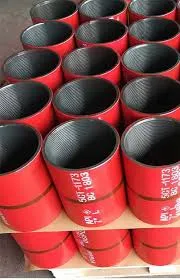- Afrikaans
- Albanian
- Amharic
- Arabic
- Armenian
- Azerbaijani
- Basque
- Belarusian
- Bengali
- Bosnian
- Bulgarian
- Catalan
- Cebuano
- Corsican
- Croatian
- Czech
- Danish
- Dutch
- English
- Esperanto
- Estonian
- Finnish
- French
- Frisian
- Galician
- Georgian
- German
- Greek
- Gujarati
- Haitian Creole
- hausa
- hawaiian
- Hebrew
- Hindi
- Miao
- Hungarian
- Icelandic
- igbo
- Indonesian
- irish
- Italian
- Japanese
- Javanese
- Kannada
- kazakh
- Khmer
- Rwandese
- Korean
- Kurdish
- Kyrgyz
- Lao
- Latin
- Latvian
- Lithuanian
- Luxembourgish
- Macedonian
- Malgashi
- Malay
- Malayalam
- Maltese
- Maori
- Marathi
- Mongolian
- Myanmar
- Nepali
- Norwegian
- Norwegian
- Occitan
- Pashto
- Persian
- Polish
- Portuguese
- Punjabi
- Romanian
- Russian
- Samoan
- Scottish Gaelic
- Serbian
- Sesotho
- Shona
- Sindhi
- Sinhala
- Slovak
- Slovenian
- Somali
- Spanish
- Sundanese
- Swahili
- Swedish
- Tagalog
- Tajik
- Tamil
- Tatar
- Telugu
- Thai
- Turkish
- Turkmen
- Ukrainian
- Urdu
- Uighur
- Uzbek
- Vietnamese
- Welsh
- Bantu
- Yiddish
- Yoruba
- Zulu
Key Distinctions Between Casing and Tubing in Oil and Gas Production
The Differences Between Casing and Tubing in Oil and Gas Production
In the oil and gas industry, the terms casing and tubing refer to essential components of the well construction process. While both serve vital roles in the extraction of hydrocarbons, they are distinct in function, purpose, and design. Understanding these differences is pivotal for engineers, geologists, and industry professionals involved in drilling operations. This article will explore the functions, types, and operational characteristics of casing and tubing.
Casing The Structural Backbone
Casing refers to the steel pipes installed in the wellbore after drilling. The primary purpose of casing is to stabilize the well and prevent the collapse of the underground formations. It serves as a protective barrier, isolating various underground layers to ensure that fluids do not migrate uncontrollably between them. By maintaining the integrity of the well, casing helps to protect groundwater aquifers and maintain pressure within the formation.
There are several types of casing, each designed for specific conditions and purposes. The most commonly used casings include
1. Surface Casing This is the first layer of casing installed and is typically set at a shallow depth. Its primary purpose is to protect fresh water from contamination during drilling and subsequent operations.
2. Intermediate Casing Installed after the surface casing, intermediate casing protects against pressure from deeper formations and serves to further isolate zones that may contain hydrocarbons.
3. Production Casing This is set just above the productive zone and is intended to allow for the extraction of oil or gas. It is designed to withstand the pressure and corrosive fluids encountered in the production phase.
4. Liner A liner is a type of casing that is not permanently anchored at the surface. Instead, it hangs from a larger casing string and provides additional stability in specific formations.
Tubing The Flow Path
In contrast, tubing is the pipe through which the actual production fluid (oil, gas, or water) flows during extraction activities. Tubing is run inside the casing and is a smaller diameter pipe designed to transport hydrocarbons to the surface. Unlike casing, which is meant to provide structural support, tubing is focused on facilitating the flow of production fluids, making it integral in the recovery process.
what are the differences between casing and tubing?

The installation of tubing occurs after the drilling phase and can be replaced or serviced without having to remove the casing
. Key characteristics of tubing include1. Size and Diameter Tubing typically has a smaller diameter than casing. This configuration maximizes pressure and flow efficiency, allowing for better control over the extraction process.
2. Material Tubing is often made from various materials, including carbon steel, stainless steel, and alloy steels, depending on the nature of the production fluids and the operating conditions. The choice of material is crucial to withstand corrosive fluids, as well as the pressures encountered during production.
3. Ease of Access One of the advantages of tubing is its replaceability. If damage occurs, operators can pull the tubing from the well and replace it without affecting the casing, thus allowing for maintenance and repair work with minimal disruption.
Key Differences in Summary
In summary, the primary differences between casing and tubing center around their respective roles and characteristics
- Function Casing serves as a structural support and protective barrier for the wellbore, while tubing is the direct conduit for the production of oil or gas.
- Installation Timing Casing is installed during the drilling process, whereas tubing is inserted after the well has been drilled and cased.
- Diameter and Material Casing is generally larger in diameter and robustly designed to withstand external pressures, while tubing is smaller and tailored to facilitate fluid transport.
- Maintenance Tubing can be removed and replaced independently of casing, allowing for easier maintenance.
Understanding these distinctions between casing and tubing is crucial for professionals in the oil and gas industry, as they optimize well performance, enhance safety, and maximize resource recovery. The interplay of these two components is fundamental to the successful management of hydrocarbon wells, ensuring efficiency and longevity in oil and gas production.
-
Tubing Pup Joints: Essential Components for Oil and Gas OperationsNewsJul.10,2025
-
Pup Joints: Essential Components for Reliable Drilling OperationsNewsJul.10,2025
-
Pipe Couplings: Connecting Your World EfficientlyNewsJul.10,2025
-
Mastering Oilfield Operations with Quality Tubing and CasingNewsJul.10,2025
-
High-Quality Casing Couplings for Every NeedNewsJul.10,2025
-
Boost Your Drilling Efficiency with Premium Crossover Tools & Seating NipplesNewsJul.10,2025







